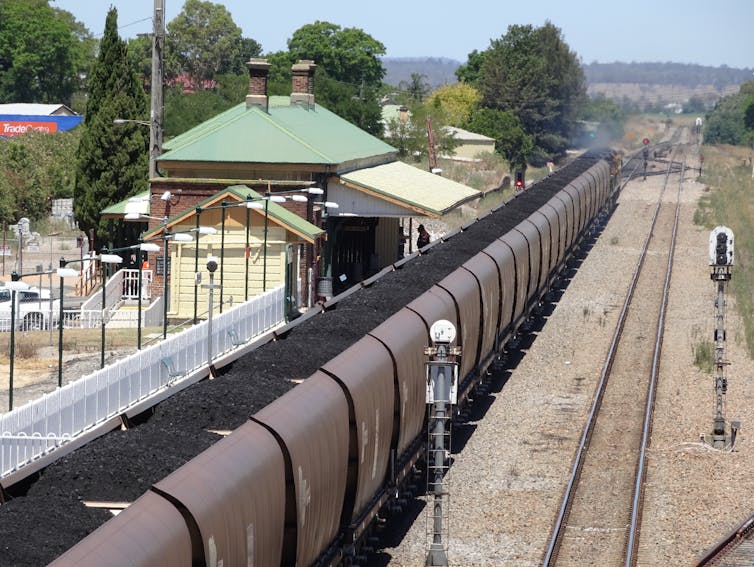This article is republished from The Conversation under a Creative Commons license. Read the original article.
Authored by Dr Justine Bell-James, Senior lecturer, The University of Queensland

On Friday, Chief Judge Brian Preston of the New South Wales Land and Environment Court handed down a landmark judgement confirming a decision to refuse a new open-cut coal mine near Gloucester in the Hunter Valley. The proposed Rocky Hill mine’s contribution to climate change was one of the key reasons cited for refusing the application.
The decision has prompted celebration among environmentalists, for whom climate-based litigation has long been an uphill battle.
Read more: Adani court case leaves the climate change question unanswered
Defeating a mining proposal on climate grounds involves clearing several high hurdles. Generally speaking, the court must be convinced not only that the proposed mine would contribute to climate change, but also that this issue is relevant under the applicable law.
To do this, a litigant needs to convince a court of a few key things, which include that:
-
the proponent is responsible for the ultimate burning of the coal, even if it is burned by a third party, and
-
this will result in increased greenhouse emissions, which in turn contributes to climate change.
In his judgement, Preston took a broad view and readily connected these causal dots, ruling that:
The Project’s cumulative greenhouse gas emissions will contribute to the global total of GHG concentrations in the atmosphere. The global total of GHG concentrations will affect the climate system and cause climate change impacts. The Project’s cumulative GHG emissions are therefore likely to contribute to the future changes to the climate system and the impacts of climate change.
Other courts (such as in Queensland, where the proposed Adani coalmine has successfully cleared various legal hurdles) have tended to take a narrower approach to statutory interpretation, with climate change just one of numerous relevant factors under consideration. In contrast, Preston found climate change to be one of the more important factors to consider under NSW legislation.
To rule against a coalmine on climate grounds, the court also needs to resist the “market substitution” argument – the suggestion that if the proponent does not mine and sell coal, someone else will. This argument has become a common “defence” in climate litigation, and indeed was advanced by Gloucester Resources in the Rocky Hill case.
Preston rejected the argument, describing it as “flawed”. He noted that there is no certainty that overseas mines will substitute for the Rocky Hill coalmine. Given increasing global momentum to tackle climate change, he noted that other countries may well follow this lead in rejecting future coalmine proposals.
He also stated that:
…an environmental impact does not become acceptable because a hypothetical and uncertain alternative development might also cause the same unacceptable environmental impact.
What does the future now hold?
There should be no doubt that this is a hugely significant ruling. However, there are several caveats to bear in mind.
First, there are avenues of appeal. In the absence of a robust legislative framework prohibiting mining operations, it is ultimately up to a court to interpret legislation and weigh up the relevant factors and evidence. The NSW Land and Environment Court has a strong history of progressive judgements, and it is not certain that this example will be followed more widely in other jurisdictions. That said, Preston’s reasoning is firmly grounded in an analysis of the relevant scientific and international context, and should be a highly persuasive precedent.
Second, it is also important to remember that this judgement arose from an initial government decision to refuse the mine, whereas many other legal challenges have arisen from a mining approval.
Finally, climate change was not the only ground on which the mine was rejected. The proposed mine would have been close to a town, with serious impacts on the community.
Read more: Carmichael mine jumps another legal hurdle, but litigants are making headway
Nevertheless, this decision potentially opens up new chapter in Australia’s climate litigation history. Preston’s ruling nimbly vaults over hurdles that have confounded Australian courts in the past – most notably, the application of the market substitution defence.
It is hard to predict whether his decision will indeed have wider ramifications. Certainly the tide is turning internationally – coal use is declining, many nations have set ambitious climate goals under the Paris Agreement, and high-level overseas courts are making bold decisions in climate cases. As Preston concluded:
…an open cut coal mine in this part of the Gloucester valley would be in the wrong place at the wrong time… the GHG emissions of the coal mine and its coal product will increase global total concentrations of GHGs at a time when what is now urgently needed, in order to meet generally agreed climate targets, is a rapid and deep decrease in GHG emissions.
Indeed, it is high time for a progressive approach to climate cases too. Hopefully this landmark judgement will signal the turning of the tides in Australian courts as well.![]()



